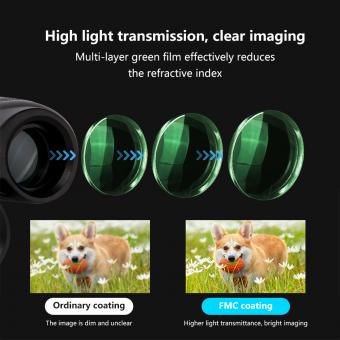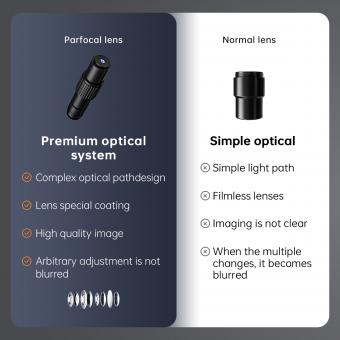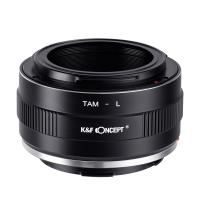What Is A Objective Lens On A Microscope ?
The objective lens is a key component of a microscope. It is the lens closest to the specimen being observed and is responsible for gathering light and forming the primary image of the specimen. The objective lens has a high magnification power and is available in different magnification levels, typically ranging from 4x to 100x or higher. The magnification power of the objective lens determines the level of detail and enlargement of the specimen. Additionally, the objective lens also plays a crucial role in determining the resolution and clarity of the image produced by the microscope. It is usually equipped with multiple lenses or lens elements to correct for various optical aberrations and improve image quality. The objective lens is typically mounted on a rotating nosepiece, allowing users to switch between different objective lenses to achieve different levels of magnification.
1、 Function and Purpose of Objective Lens in Microscopy
The objective lens is a crucial component of a microscope that plays a vital role in magnifying the specimen being observed. It is located close to the specimen and is responsible for gathering light and forming the primary image of the specimen. The objective lens is typically composed of multiple lenses that work together to provide high-resolution and detailed images.
The main function of the objective lens is to magnify the specimen. It achieves this by bending the light rays that pass through it, which increases the apparent size of the specimen. The magnification power of the objective lens can vary, ranging from low magnification (e.g., 4x) to high magnification (e.g., 100x or higher). The objective lens is usually labeled with its magnification power, allowing users to select the appropriate lens for their specific needs.
Another important function of the objective lens is to gather light from the specimen. It has a larger diameter compared to the eyepiece lens, allowing it to collect more light and enhance the brightness of the image. This is particularly important when observing specimens with low contrast or when using techniques such as phase contrast or darkfield microscopy.
The objective lens also contributes to the resolution of the microscope. Resolution refers to the ability to distinguish between two closely spaced objects. The objective lens with a higher numerical aperture (NA) provides better resolution. Advances in lens technology have led to the development of high NA objective lenses, enabling researchers to observe finer details and structures within the specimen.
In recent years, there have been advancements in objective lens design, such as the development of specialized lenses for specific microscopy techniques. For example, there are objective lenses optimized for fluorescence microscopy, confocal microscopy, and super-resolution microscopy. These lenses are designed to maximize the performance of these techniques and provide clearer and more detailed images.
In conclusion, the objective lens is a critical component of a microscope that magnifies the specimen, gathers light, and contributes to the resolution of the image. With advancements in lens technology, researchers can now obtain higher magnification, improved brightness, and enhanced resolution, allowing for more detailed and accurate observations in various fields of research.

2、 Types of Objective Lenses and Their Characteristics
A objective lens on a microscope is a crucial component that is responsible for magnifying the specimen being observed. It is located closest to the specimen and is designed to gather light and focus it onto the eyepiece, allowing for a clear and detailed view of the specimen.
There are several types of objective lenses available, each with its own characteristics and magnification capabilities. The most common types include the achromatic, plan-achromatic, and apochromatic lenses.
Achromatic lenses are the most basic type and are designed to correct for chromatic aberration, which causes different colors of light to focus at different points. These lenses provide a good balance between cost and image quality, making them suitable for routine laboratory use.
Plan-achromatic lenses are an advanced version of achromatic lenses and are designed to correct for both chromatic and spherical aberrations. They provide a flatter field of view and improved image quality, making them ideal for high-resolution imaging and research applications.
Apochromatic lenses are the most advanced type and are designed to correct for chromatic, spherical, and coma aberrations. They offer the highest level of image quality, color accuracy, and resolution, making them suitable for demanding applications such as medical research and industrial inspection.
In recent years, there have been advancements in objective lens technology, particularly in the field of super-resolution microscopy. These lenses, known as super-apochromatic lenses, are designed to achieve even higher resolution and image quality, allowing researchers to observe structures and processes at the nanoscale level.
In conclusion, the objective lens on a microscope is a critical component that determines the magnification and image quality of the observed specimen. The type of objective lens used depends on the specific application and desired level of image quality, with advancements in technology continuously pushing the boundaries of what can be observed and studied.

3、 Numerical Aperture and Resolution of Objective Lenses
The objective lens is a crucial component of a microscope that plays a significant role in magnifying and resolving the specimen being observed. It is located closest to the specimen and is responsible for collecting and focusing the light onto the eyepiece or camera.
The objective lens consists of a series of lenses that work together to provide a magnified and detailed image of the specimen. It typically has a high numerical aperture (NA), which is a measure of the lens's ability to gather light and resolve fine details. The NA is determined by the lens's design and the refractive index of the medium between the lens and the specimen.
The numerical aperture of the objective lens directly affects the resolution of the microscope. Resolution refers to the ability of the microscope to distinguish between two closely spaced objects as separate entities. The higher the numerical aperture, the better the resolution of the microscope. This means that objective lenses with higher NA can reveal finer details and provide clearer images.
In recent years, there have been advancements in objective lens technology that have further improved resolution and image quality. For example, the development of super-resolution microscopy techniques, such as stimulated emission depletion (STED) microscopy and structured illumination microscopy (SIM), has pushed the limits of resolution beyond the diffraction limit of light. These techniques, combined with high NA objective lenses, allow researchers to observe structures and processes at the nanoscale.
In conclusion, the objective lens on a microscope is a critical component that determines the magnification, resolution, and image quality. The numerical aperture of the objective lens plays a key role in achieving high-resolution images, and recent advancements in objective lens technology have further enhanced the capabilities of microscopy.

4、 Correcting Aberrations in Objective Lenses for Improved Imaging
A objective lens on a microscope is a crucial component that plays a significant role in magnifying and resolving the specimen being observed. It is located close to the specimen and is responsible for collecting and focusing the light that passes through the sample.
The objective lens is designed to correct various optical aberrations that can occur during the imaging process. Aberrations are deviations from ideal imaging conditions that can result in distortions, blurring, or loss of resolution in the final image. These aberrations can be caused by factors such as lens imperfections, wavelength-dependent refraction, and diffraction effects.
To improve imaging quality, objective lenses are carefully designed and manufactured to minimize these aberrations. Correcting aberrations involves a combination of lens design, material selection, and advanced manufacturing techniques. The latest point of view in objective lens design focuses on achieving higher numerical apertures, which allow for increased resolution and improved image quality.
One approach to correcting aberrations is the use of multiple lens elements within the objective lens. These elements are carefully arranged and shaped to counteract specific aberrations, such as spherical aberration, chromatic aberration, and coma. Additionally, advanced lens coatings are applied to reduce reflections and increase light transmission, further enhancing image clarity.
In recent years, there has been a growing interest in developing objective lenses with adaptive optics capabilities. This technology involves the use of deformable mirrors or liquid crystal elements that can dynamically adjust the shape of the lens to correct for aberrations in real-time. This approach has shown promising results in improving imaging quality, particularly in complex samples or challenging imaging conditions.
Overall, the objective lens is a critical component in a microscope that plays a vital role in achieving high-quality imaging. Ongoing advancements in lens design and manufacturing techniques continue to push the boundaries of microscope imaging, enabling researchers to observe and analyze specimens with unprecedented clarity and detail.







































